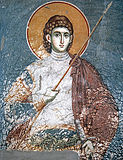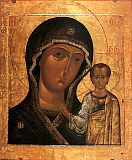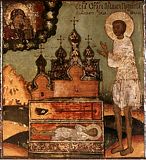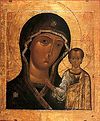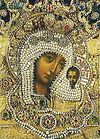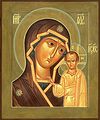

| Previous day | Next day |
| Old Style
July 8
|
Tuesday |
New Style
July 21
|
| 7th Week after Pentecost. Tone 5. | No fast.
|
![]() Appearance of the Kazan Icon of the Most Holy Theotokos (1579).
Appearance of the Kazan Icon of the Most Holy Theotokos (1579). ![]() Great-martyr Procopius of Caesarea in Palestine, and with him Martyrs Theodosia (his mother), tribunes Antiochus and Nicostratus, and twelve women of senatorial rank (303).
Great-martyr Procopius of Caesarea in Palestine, and with him Martyrs Theodosia (his mother), tribunes Antiochus and Nicostratus, and twelve women of senatorial rank (303). ![]() St. Procopius, fool-for-Christ, wonderworker of Ustiug (Vologda) (1303).
St. Procopius, fool-for-Christ, wonderworker of Ustiug (Vologda) (1303).
Righteous Procopius, fool-for-Christ, of Ustya (Vologda) (ca. 1600).
Icons of the Most Holy Theotokos: weeping “Umileniye” (“Of Tender Feeling”) of Novgorod, and “Peschanskaya.” (1754)
Martyr Mirdat, King of Kartli, Georgia (410). Blessed King Edgar the Peaceable, of England (975). Martyrs Virgin Sunniva and companions, on Selje Island (Norway) (10th c.). St. Theophilus the Myrrh-gusher, of Pantocrator Monastery, Mt. Athos (1548). New Hieromartyr Anastasius, priest, of Constantinople (1743). Translation of the relics of St. Demetrius of Basarabov, Bulgaria, to Bucharest (1774).
Slaying of Anastasia Strogilos on the Mount of Olives (1995).
Articles
 Greatmartyr Procopius of Caesarea, in PalestineThe Holy Great Martyr Procopius, in the world Neanius, a native of Jerusalem, lived and suffered during the reign of the emperor Diocletian (284-305). |
